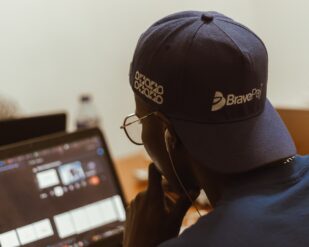


Mobile Application Penetration Testing Methodology (Industry Standards)
1. Industry Standards & Frameworks
OWASP Mobile Security Testing Guide (MSTG)
The de facto standard for mobile app testing.
- Provides a testing methodology + checklist.
- Covers Android, iOS, and hybrid apps.
- Has mappings to the Mobile Application Security Verification Standard (MASVS).
Resource: https://mas.owasp.org
OWASP MASVS (Mobile App Security Verification Standard)
Defines levels of assurance:
- L1 — Standard security for all apps.
- L2 — Defense-in-depth (financial, healthcare, sensitive apps).
- R — Resilience against reverse engineering / tampering.
MSTG provides how to test MASVS requirements.
PTES (Penetration Testing Execution Standard)
Not mobile-specific, but the phases are universally applied:
- Pre-engagement → Intelligence Gathering → Threat Modeling → Exploitation → Reporting
NIST SP 800-163 (Guidelines for Vetting Mobile Apps)
Focuses on US federal compliance & risk assessment. Useful for regulated industries.
ISO/IEC 27034
Broader application security standard, sometimes referenced for mobile testing compliance.
2. Testing Methodology (Step-by-Step)
Think of it in phases — similar to network/web pentesting but adapted for mobile ecosystems:
Phase 1 – Pre-Engagement
- Define scope (Android, iOS, APIs, backend, devices).
- Define threat model: casual attacker, insider, advanced nation-state.
- Get required artifacts: APK, IPA, source code, test accounts.
Phase 2 – Recon & Static Analysis (SAST)
Decompile app and analyze offline. Look for:
- Hardcoded secrets (API keys, tokens, credentials).
- Debug code / developer logs.
- Insecure storage of sensitive data.
Tools: Android: JADX, apktool, MobSF. iOS: class-dump, Hopper, MobSF. Static analyzers: QARK, MobSF, SonarQube.
Phase 3 – Dynamic Analysis (DAST)
Run the app on real or emulated devices. Observe network traffic, API calls, storage behavior.
Tests include:
- Network Security: SSL pinning, MITM resistance, certificate validation.
- Runtime Protections: Root/jailbreak detection, code obfuscation bypass.
- Insecure IPC (Android intents, iOS URL schemes).
Tools: Burp Suite / OWASP ZAP (HTTP/S interception), Frida, Objection, Xposed modules.
Phase 4 – API & Backend Testing
Mobile apps are front-ends to APIs — test the APIs too:
- Broken authentication & session handling.
- Improper authorization (IDOR).
- Rate limiting.
- Input validation (SQLi, NoSQLi, XXE).
Tools: Burp Suite, Postman, mitmproxy.
Phase 5 – Reverse Engineering & Tampering
Assess resilience against reverse engineering. Attempt:
- Repackaging the app (modifying APK/IPA).
- Code injection, hooking sensitive methods.
- Debug bypass.
Tools: Frida, Objection, Ghidra, Hopper, Radare2, JADX.
Phase 6 – Local Storage & Device Interaction
- Check if sensitive data is stored insecurely:
- Android: SharedPreferences, SQLite, External Storage.
- iOS: NSUserDefaults, Keychain, plist files.
- Test inter-app communication (custom URL handlers, deep links, Android Intents).
- Verify clipboard usage (sensitive data leaks).
Phase 7 – Exploitation & Privilege Escalation
Attempt full exploitation paths and chaining of flaws:
- Weak SSL → MITM → Token Theft.
- Root/Jailbreak bypass → Extract storage.
- Reverse engineering → API key exposure.
Phase 8 – Reporting
- Map findings back to MASVS requirements.
- Provide risk ratings, PoCs, remediation steps.
- Include screenshots, code snippets, test logs.
3. Latest Techniques (2024–2025 Mobile Testing)
Current industry & attack trends:
- Bypassing SSL Pinning with Frida/Objection — still essential.
- AI/ML-based Mobile Apps — test prompt injection in embedded chatbots.
- Mobile Supply Chain Risks — malicious SDKs in ad/analytics libraries (XcodeGhost-style).
- Cryptographic Failures — insecure JWT handling in mobile APIs.
- Cloud Integration Issues — Firebase/Firestore misconfigs leaking user data.
- IoT/Device Integration — new attack surfaces from wearables, cars, smart home devices.
- Mobile Payment Testing — EMVCo, NFC-based app testing, and PCI DSS compliance.
Summary
Follow OWASP MSTG for detailed test cases; map findings to MASVS for assurance levels; use both static + dynamic analysis (MobSF, Frida, Burp); include API/backend testing — since most mobile vulnerabilities are server-side; test for reverse engineering resistance and tampering protections; align reports with compliance standards (NIST, PCI, ISO) if needed.






